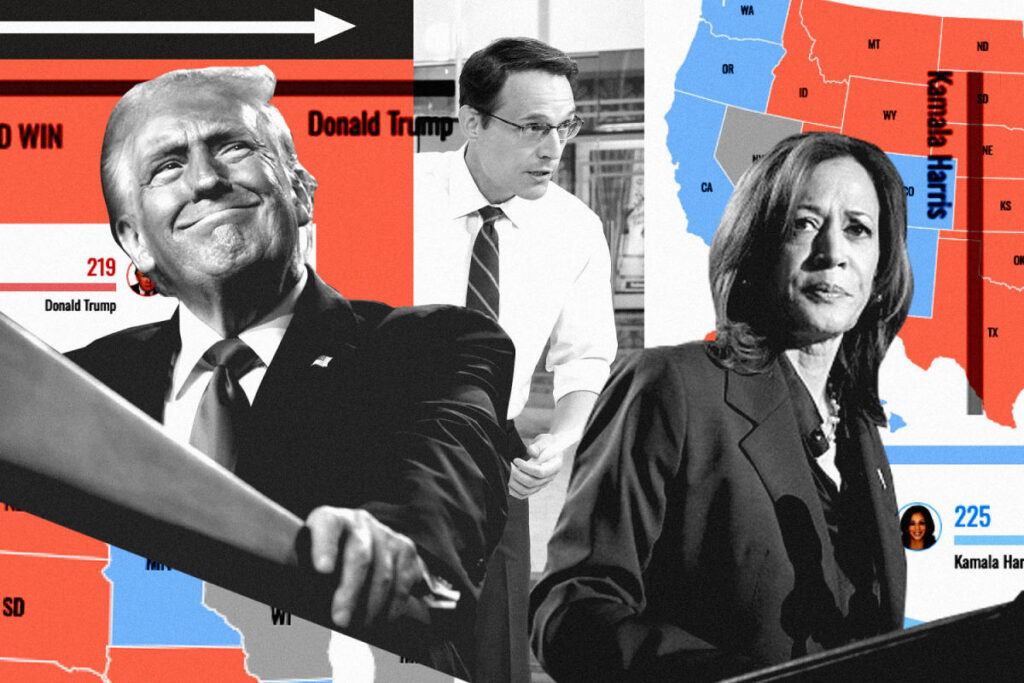In the 2024 presidential election, President-elect Donald Trump demonstrated remarkable success in seven battleground states, outpacing Democratic rival Vice President Kamala Harris, who struggled to maintain previous electoral performance. Trump’s strategy capitalized on strengthening his already formidable support among white, blue-collar voters and gained substantial backing from diverse nonwhite demographics, particularly in suburban areas. In contrast, Harris’s support regressed, primarily among the wealthier, college-educated voter base that increasingly characterizes the Democratic Party. The examination of county-level data and exit polls reveals a significant shift in voter trends that shaped the outcome of this tightly contested election.
In Arizona, Trump received 52.2% of the vote compared to Harris’s 46.7%, resulting in a margin of victory of over 186,000 votes. Central to Trump’s success was Maricopa County, which houses the majority of Arizona’s population. After Biden’s narrow win here in 2020, the county reverted to Republican dominance, with Trump capturing a 70,000-vote advantage. The shift in Hispanic support from a 24-point deficit to just 10 points was instrumental as one-third of Maricopa’s residents are Hispanic. Trump also saw improvements in Pima County, where he decreased the Democratic margin, and significant gains with Native Americans in counties like Apache and Navajo played a role in his victory.
Georgia’s election results were similarly telling. Trump garnered 50.7% of the votes to Harris’s 48.5%, marking a shift toward the Republican candidate. Biden’s previous success relied heavily on nine dense metro Atlanta counties. However, Harris struggled to maintain the momentum, securing a 35-point margin, which was a decrease from Biden’s previous lead. Despite some gains in certain counties, Harris’s support faltered in more significant population areas, particularly among nonwhite demographics, while Trump expanded his reach in rural and suburban areas of Georgia, securing victories in the exurbs.
In Michigan, Trump managed to reverse his previous loss and clinched 49.6% of the vote against Harris’s 48.2%. The dynamic in the state was stark, as Harris achieved some isolated victories in affluent northern counties, but the vast majority of counties saw Trump making significant gains, particularly in Wayne County, where Harris’s support among Black voters diminished. The Arab American communities in cities like Dearborn also turned towards Trump, reflecting a trend of erosion in Democratic strongholds that relied heavily on nonwhite voter bases. Overall, Harris’s inability to replicate Biden’s success in the urban centers and blue-collar regions led to Trump’s nearly 80,000-vote advantage.
In Nevada, Trump recorded a narrow victory with 50.6% of the votes compared to Harris’s 47.5%. Clark County, home to Las Vegas, has a historically Democratic leaning, but Trump’s support surged among Hispanic and Asian American voters, who he managed to attract after previously losing their support. This shift allowed Trump to close the gap in a crucial county. Additionally, gains in other rural areas contributed to Trump’s emerging presence in Nevada, resulting in his first win there since George W. Bush in 2004 while still losing Clark and Washoe Counties.
North Carolina brought similar outcomes, with Trump securing 51% of the vote against Harris’s 47.8%. The state saw Democrats fail to gain traction in their urban enclaves, which were vital for their coalition. Though Harris saw slight improvements in specific counties, the overall picture showed a decline in support compared to Biden’s performance, compounded by Trump’s increased margins, particularly in rural and Black-populated counties, which showcased a continuing trend of blue-collar voters shifting their allegiance to the Republican Party.
Finally, in Pennsylvania, Trump achieved a slim victory with 50.4% to Harris’s 48.6%. The state’s dynamics shifted significantly as Trump made inroads among Latino voters and reversed previous losses to white blue-collar voters that had defected to Biden in 2020. Key urban areas such as Philadelphia, while still leaning Democratic, experienced notable declines in support for Harris compared to Biden, particularly among Latino precincts. Harris’s challenge was further magnified by lessened margins in the affluent suburbs of Philadelphia, which had previously been seen as potential Democratic strongholds. Collectively, these shifts across battleground states illustrated Trump’s strategic adaptability and the Democratic Party’s challenges in maintaining its coalition amid changing voter demographics.

